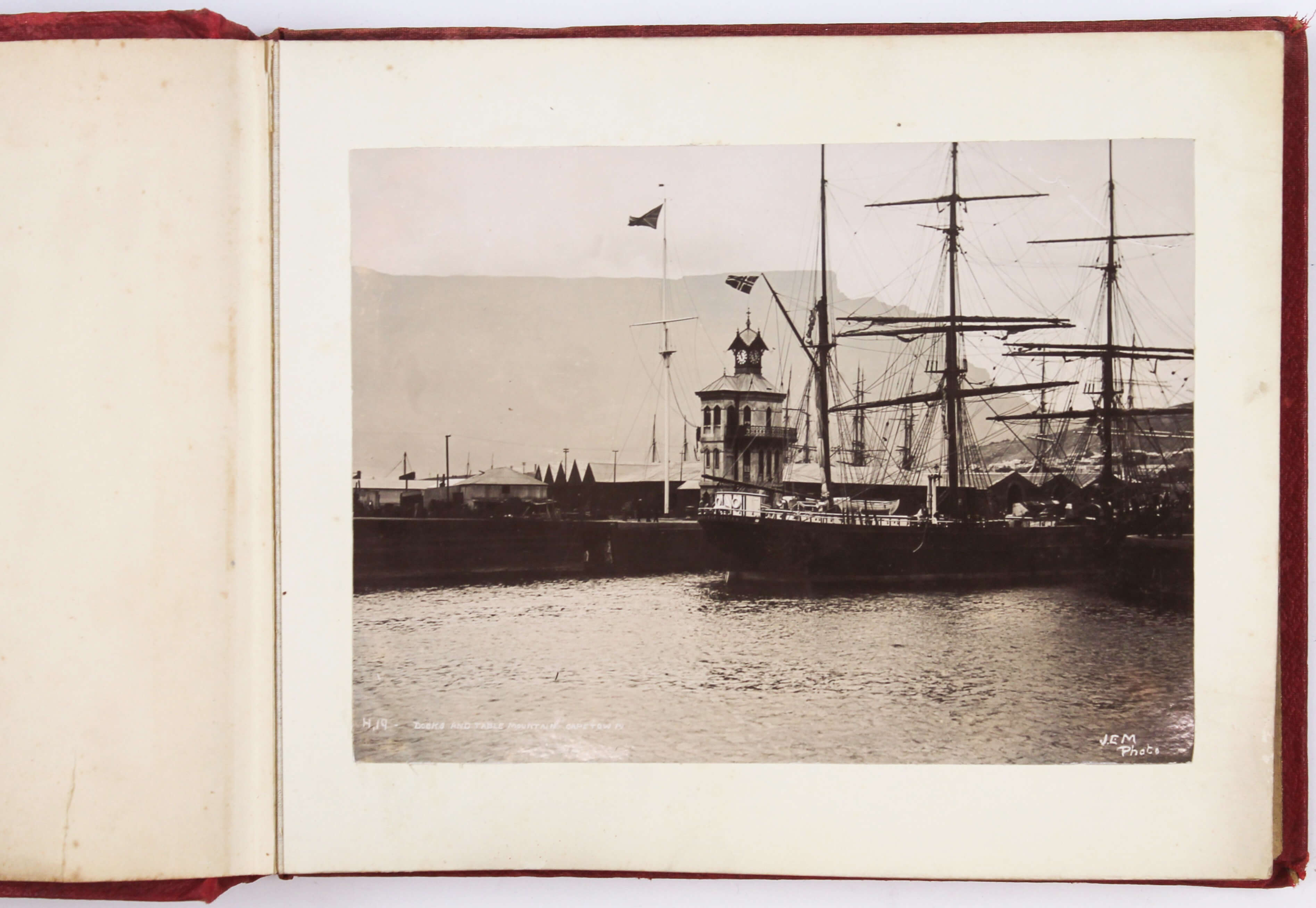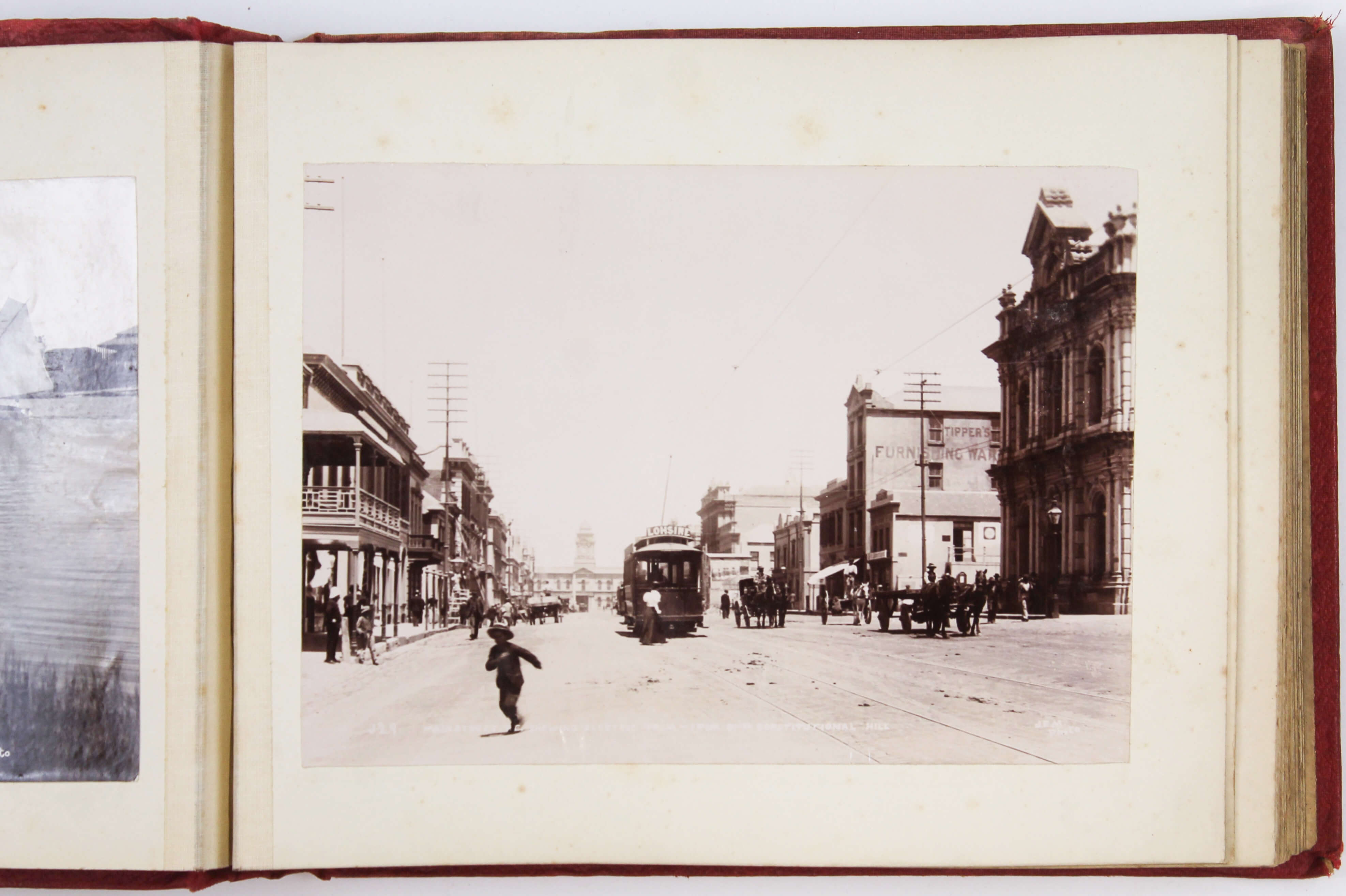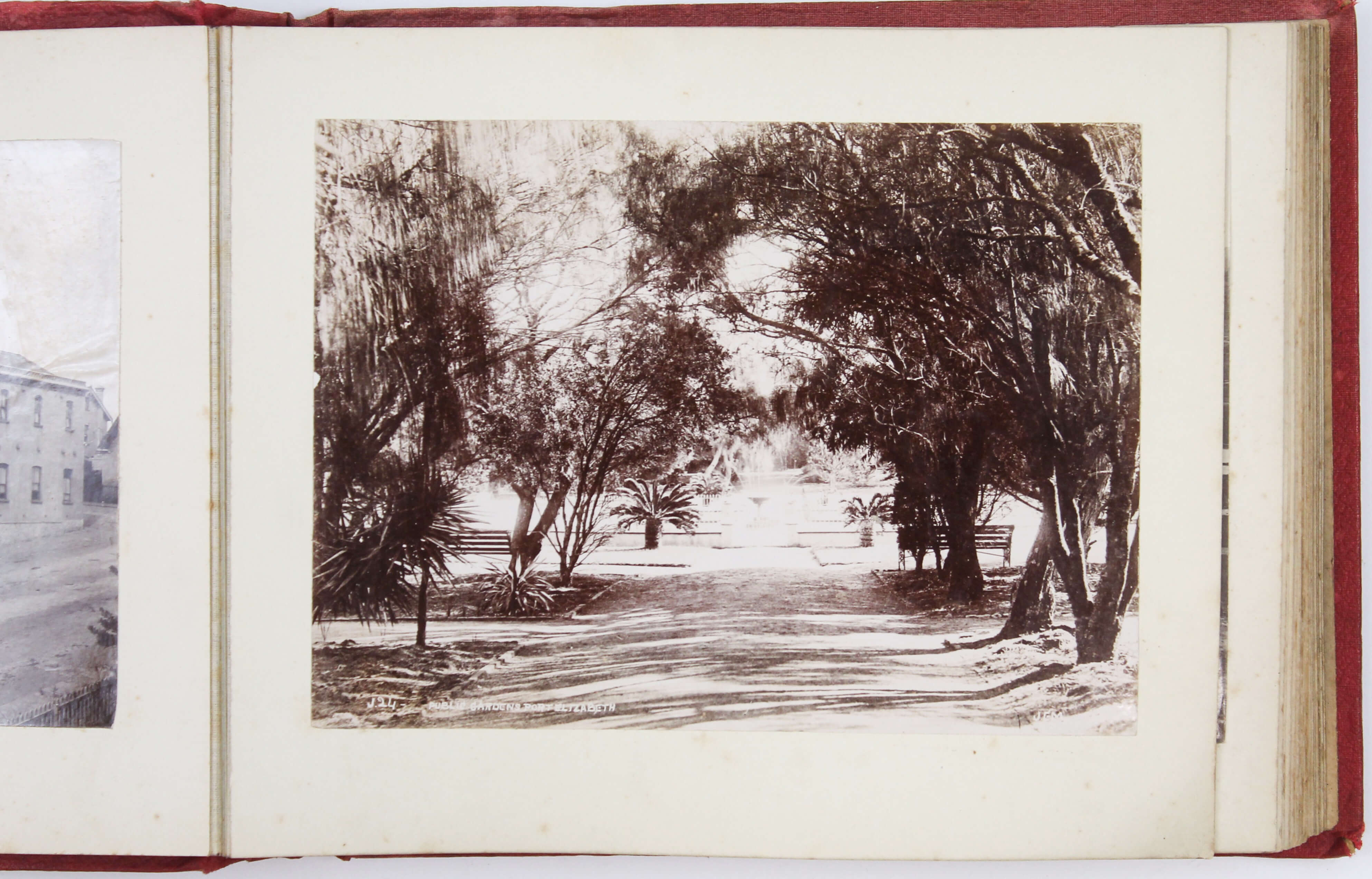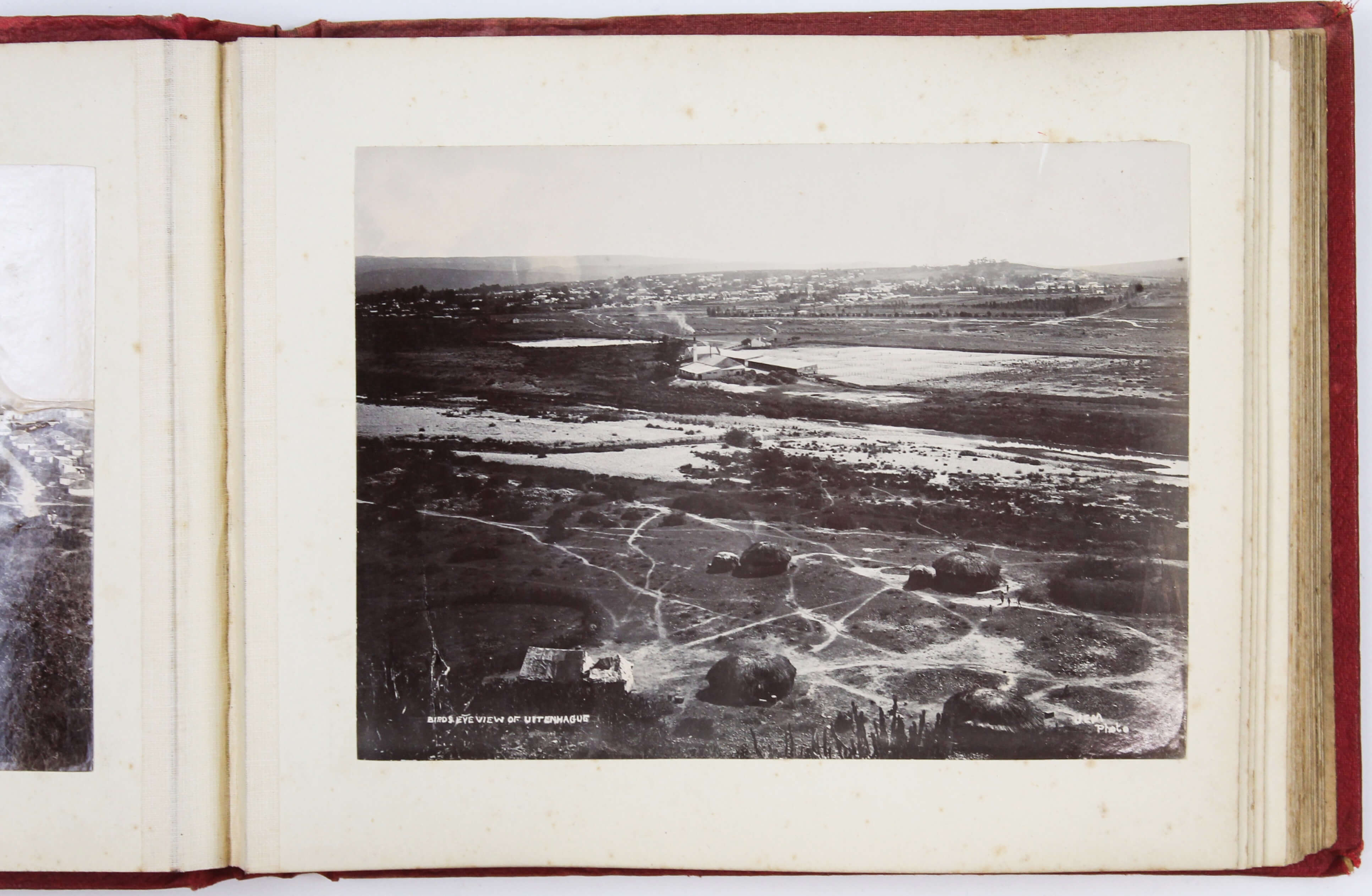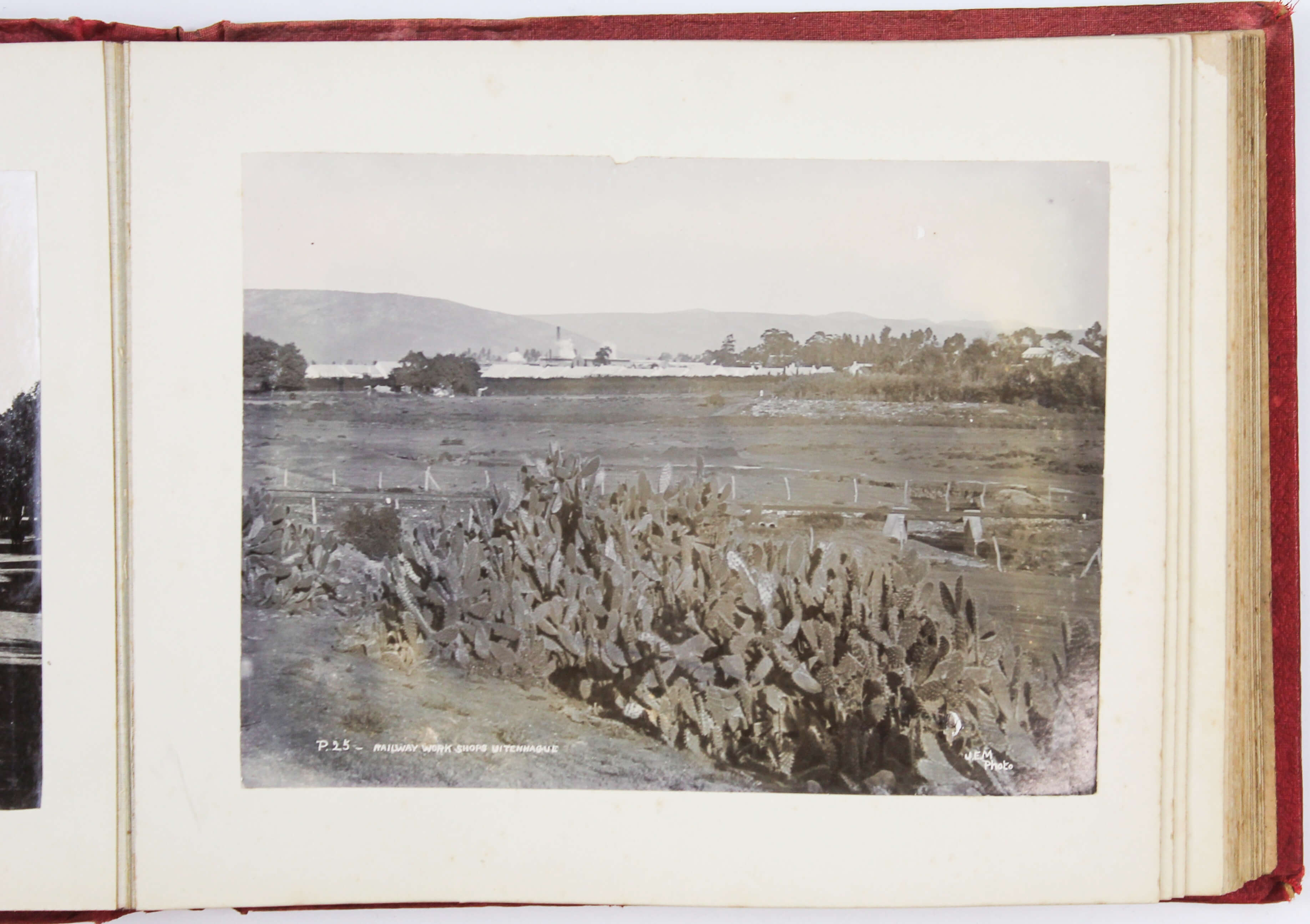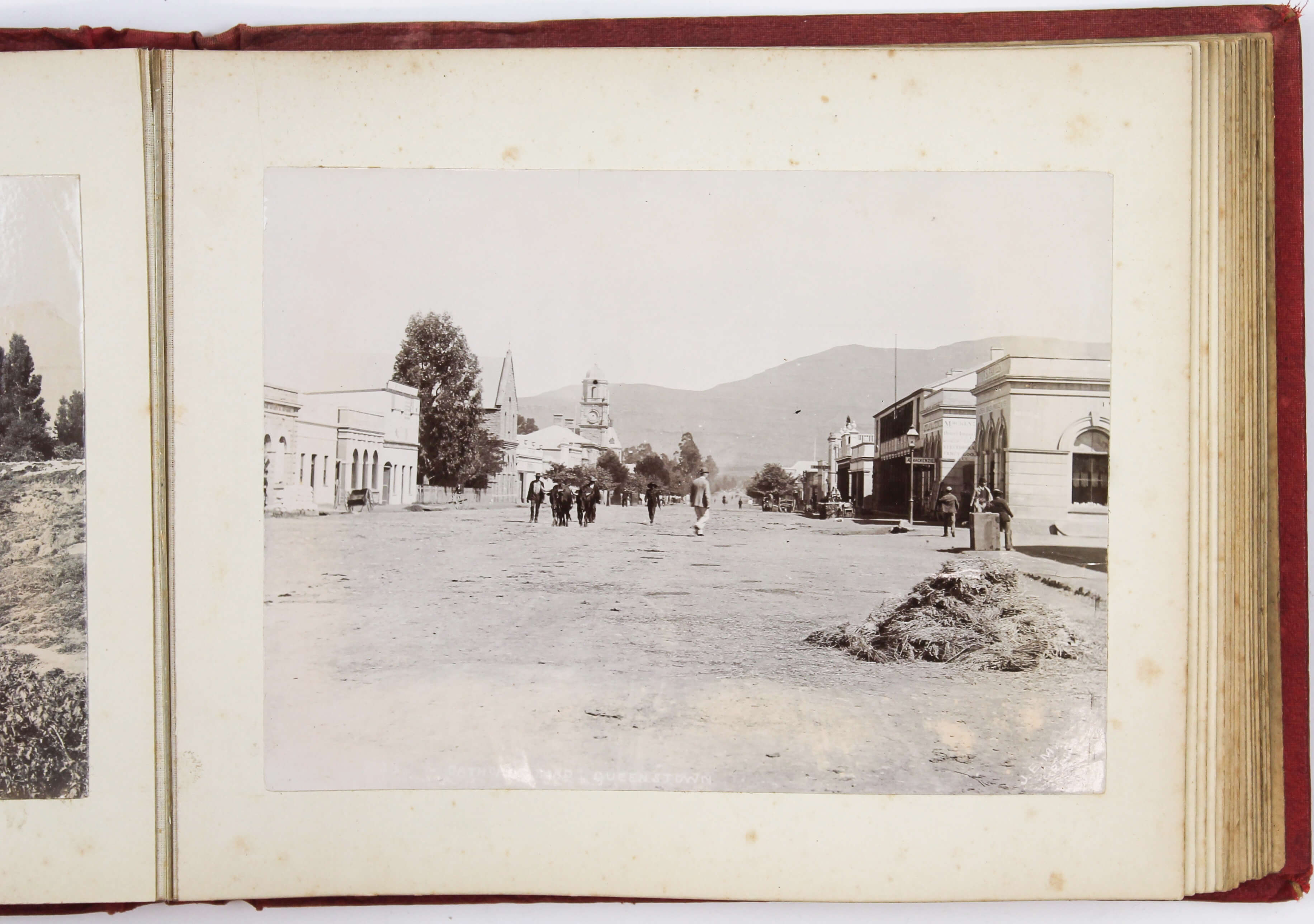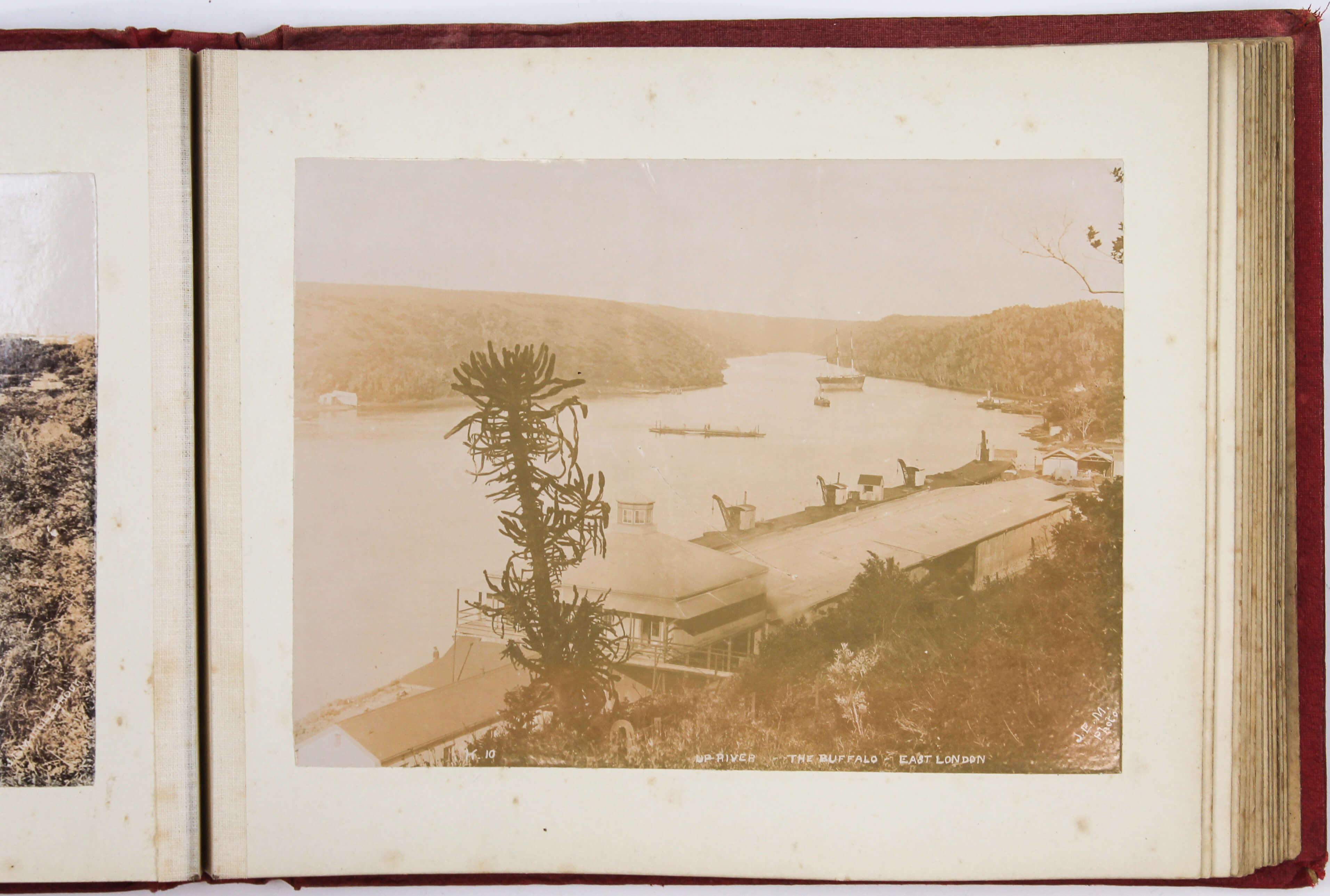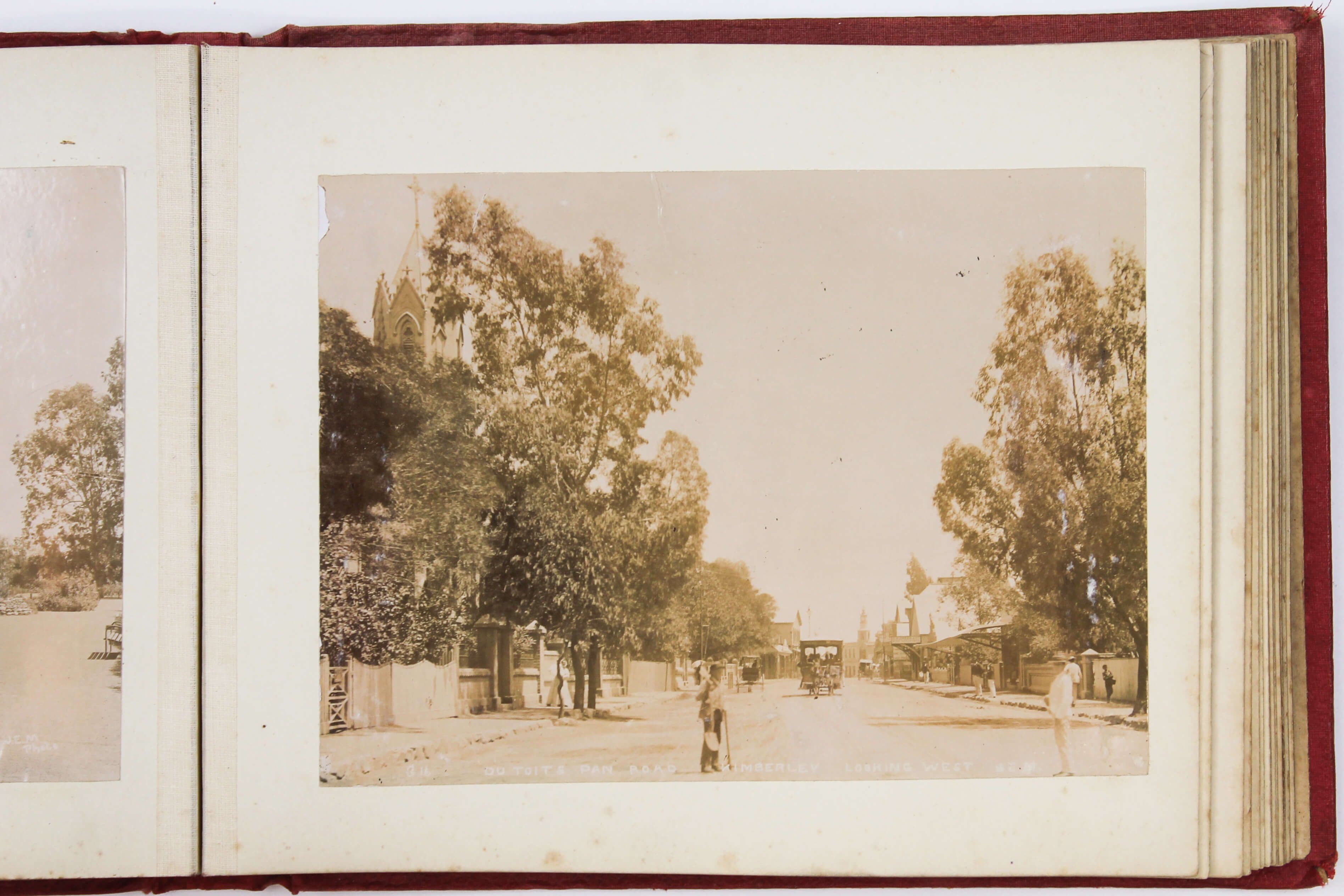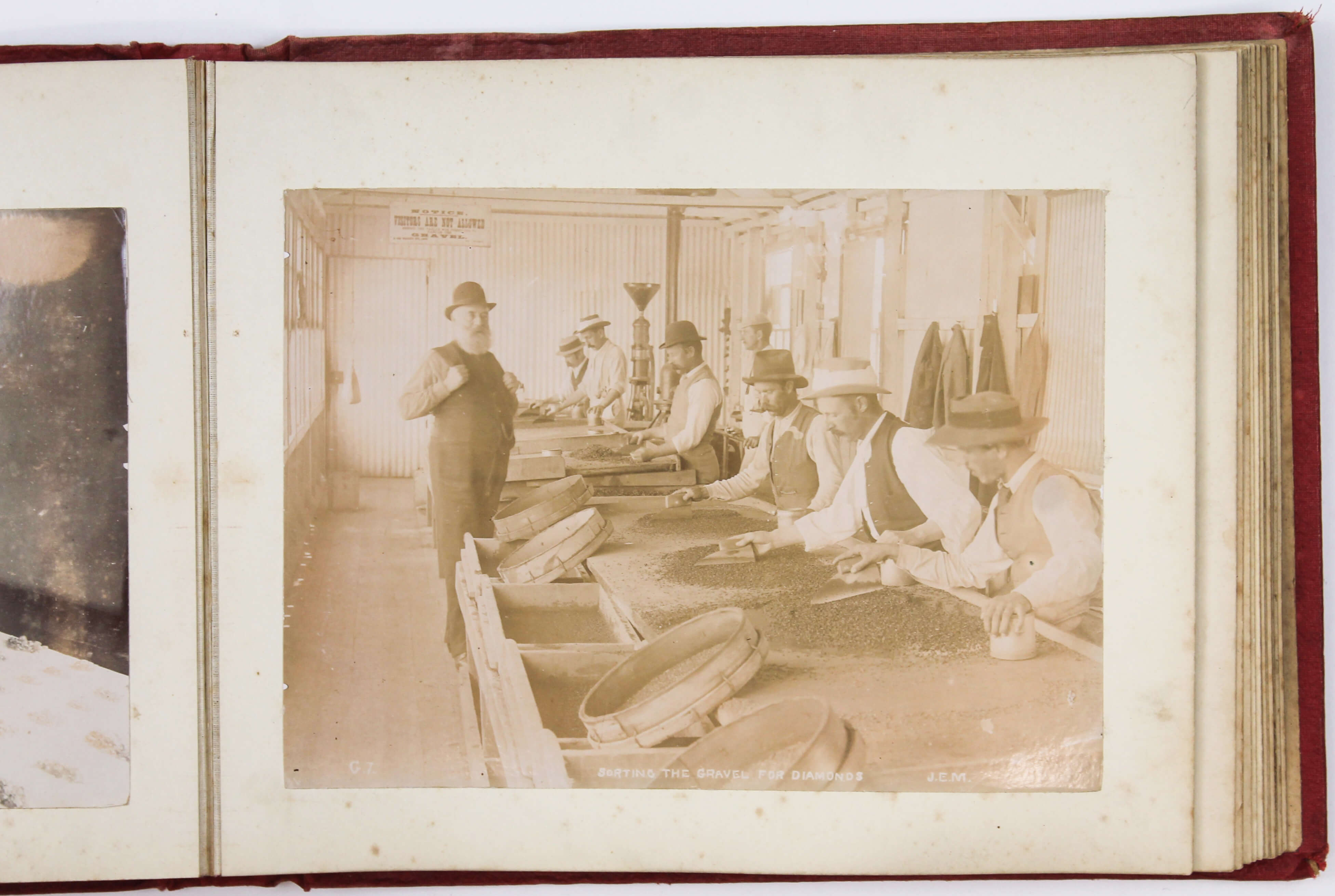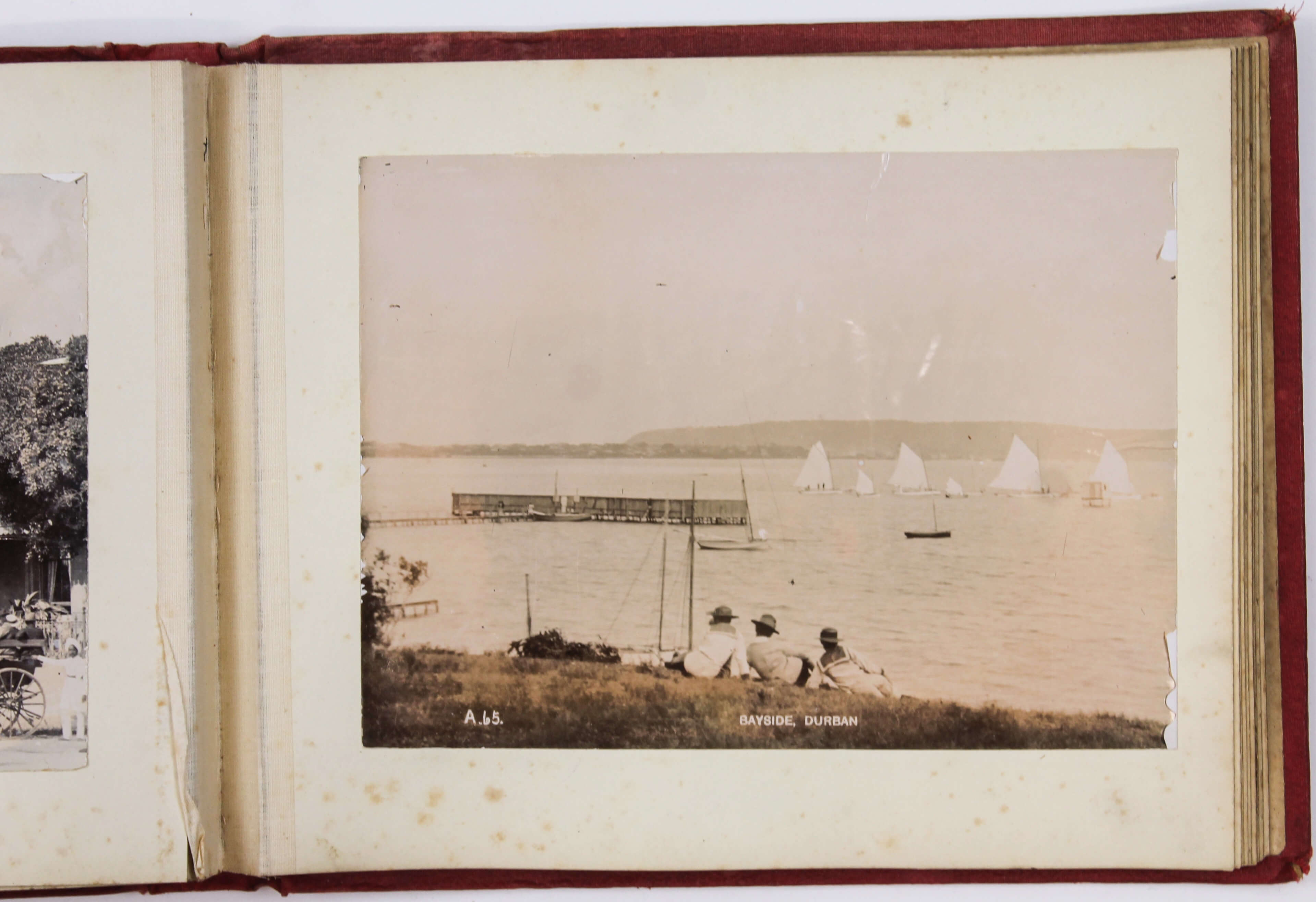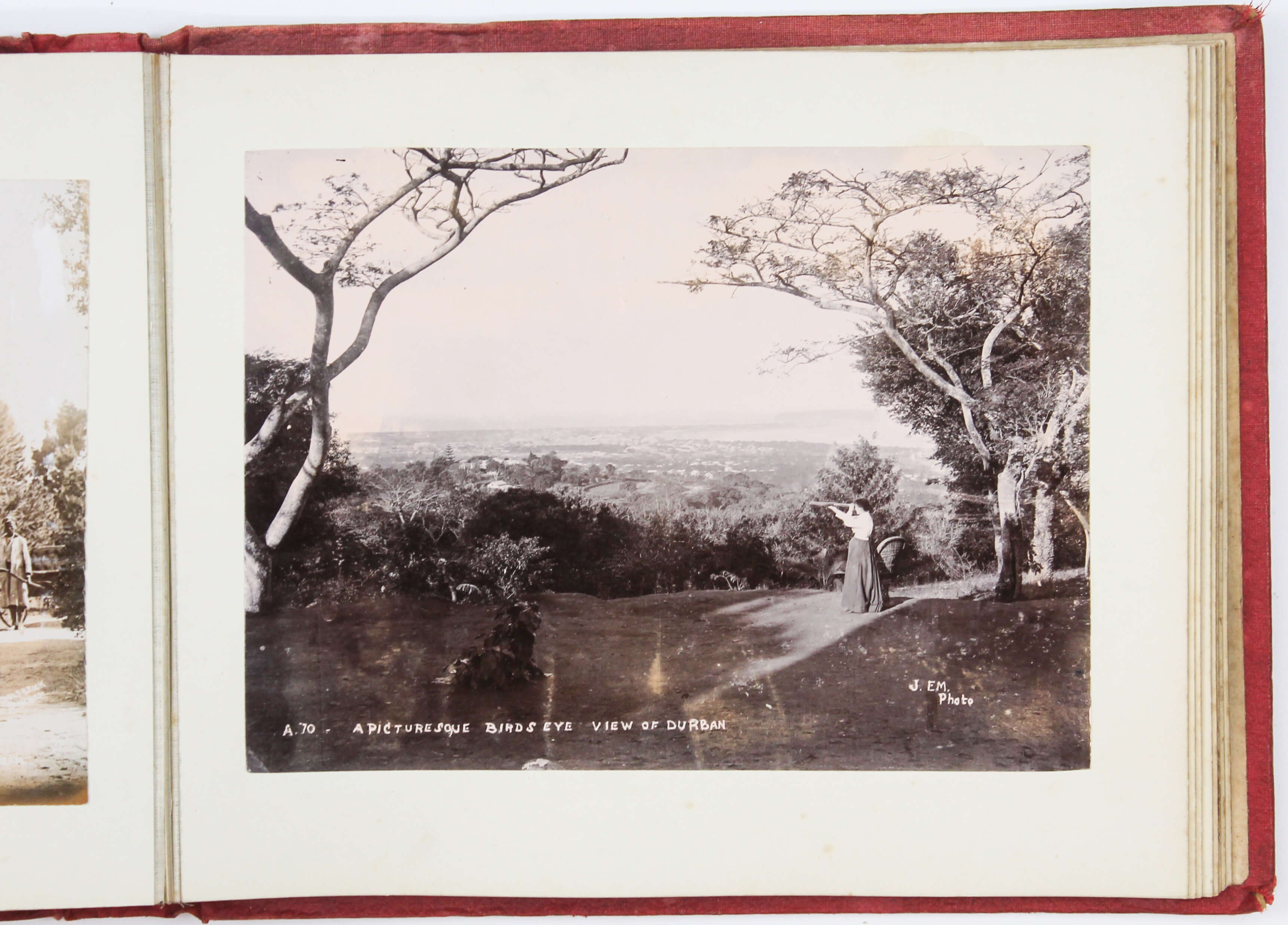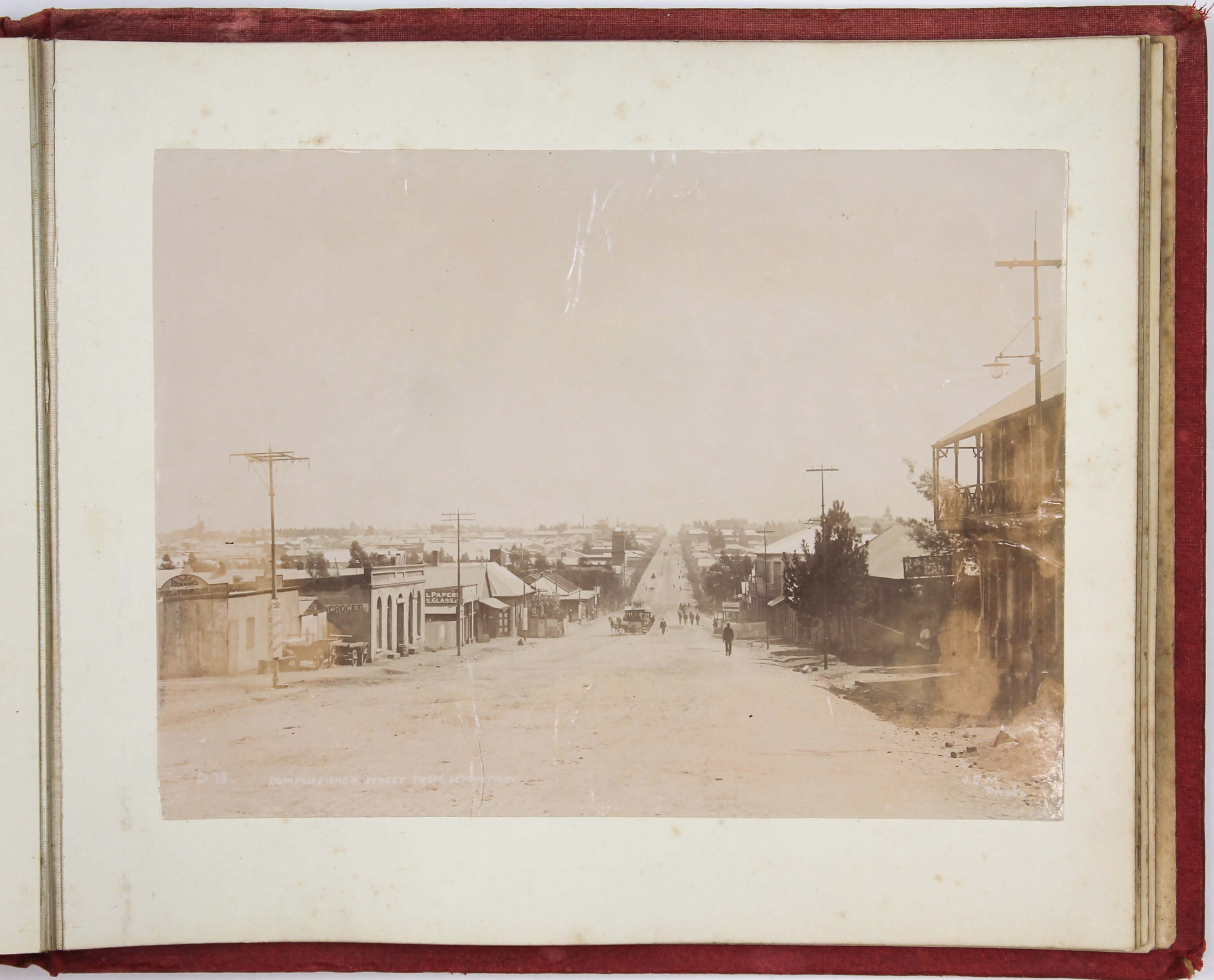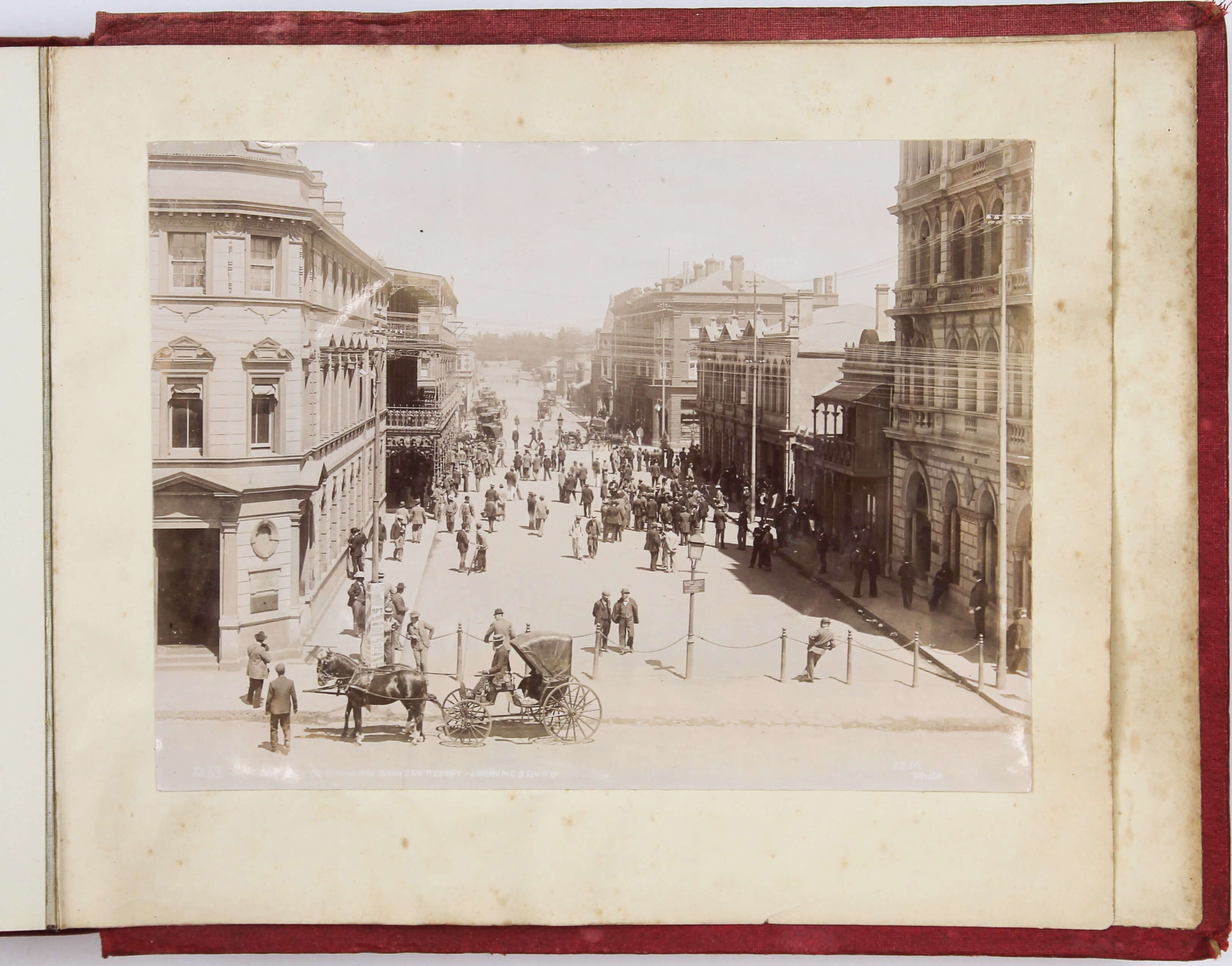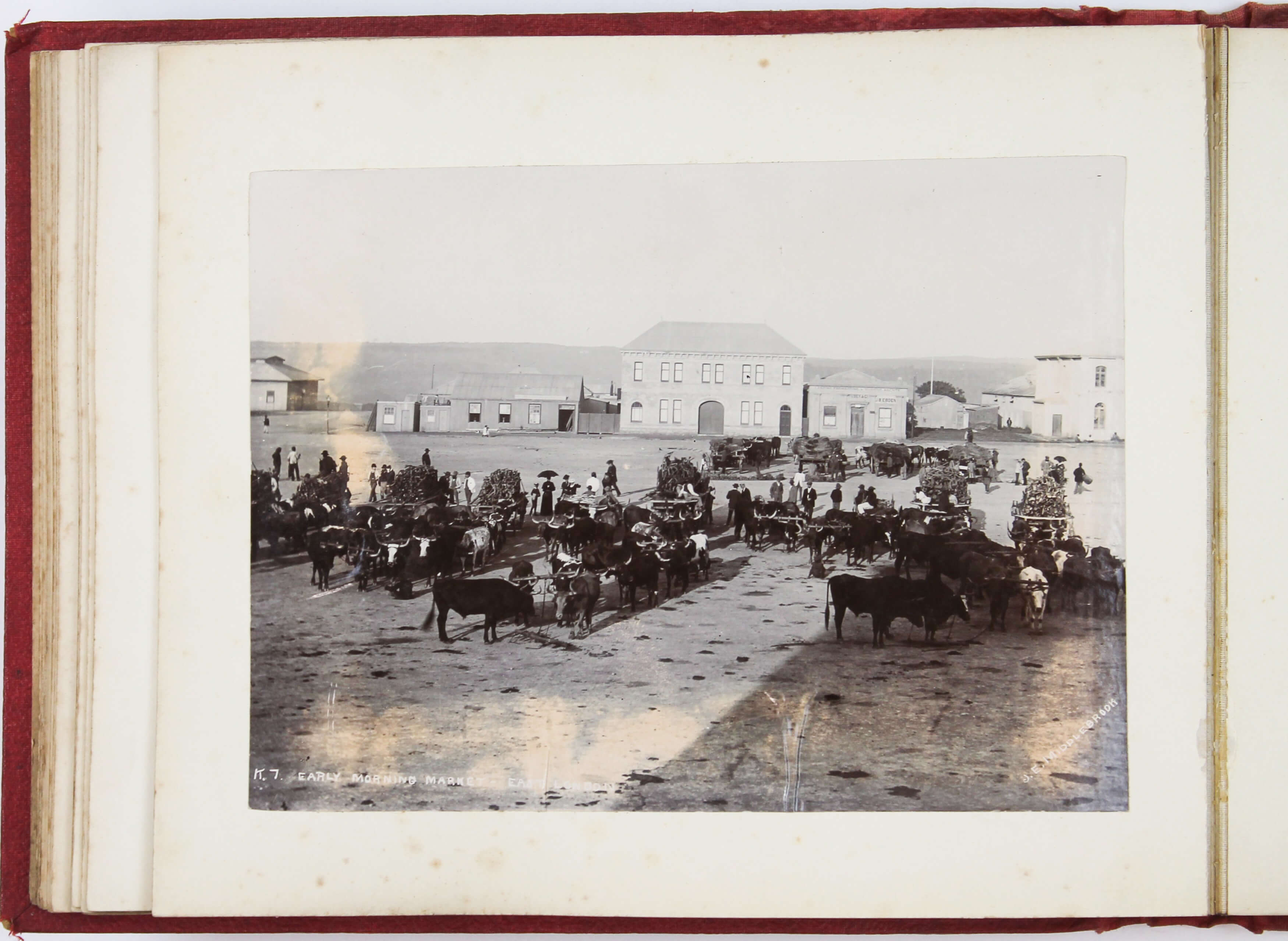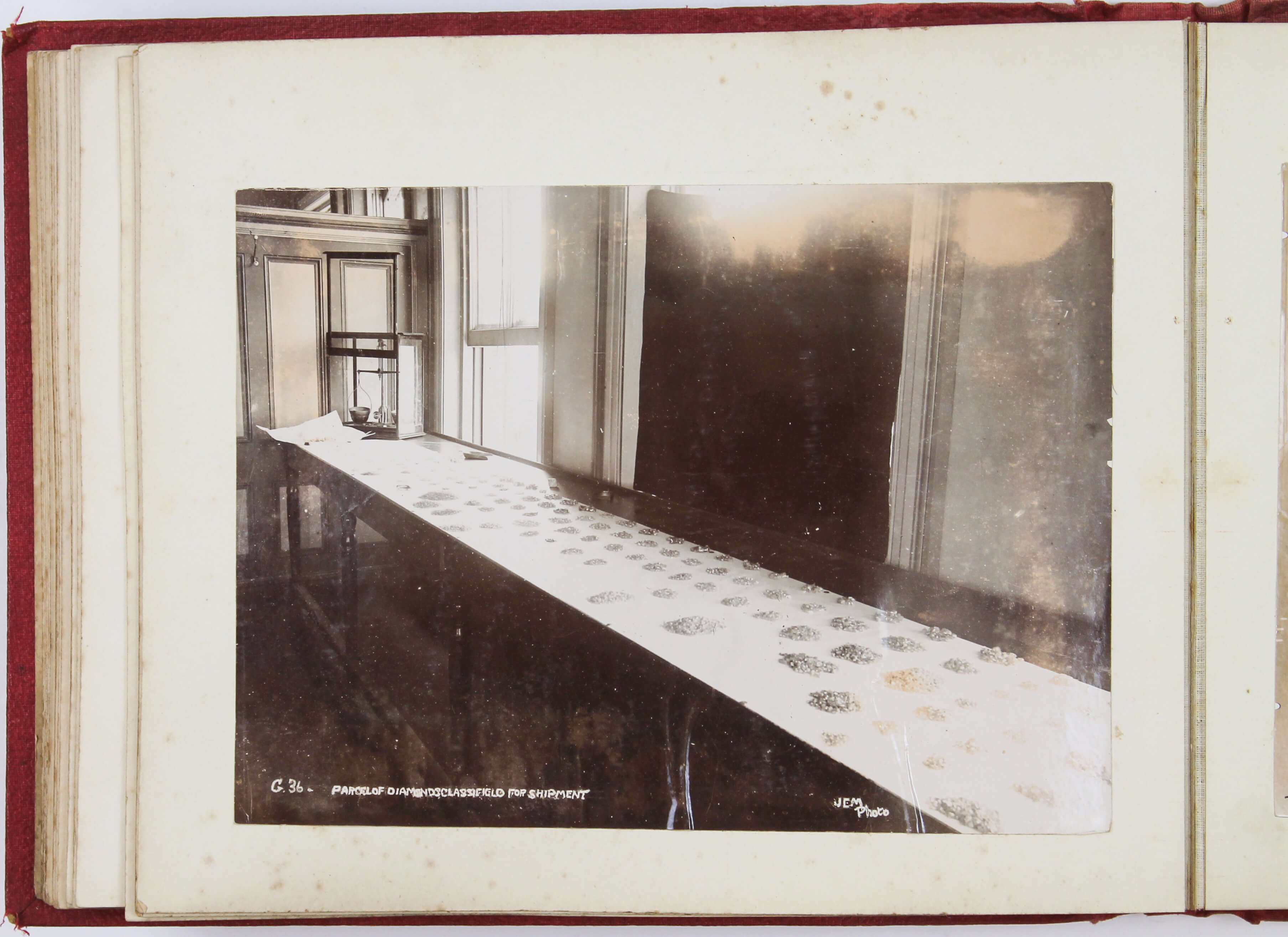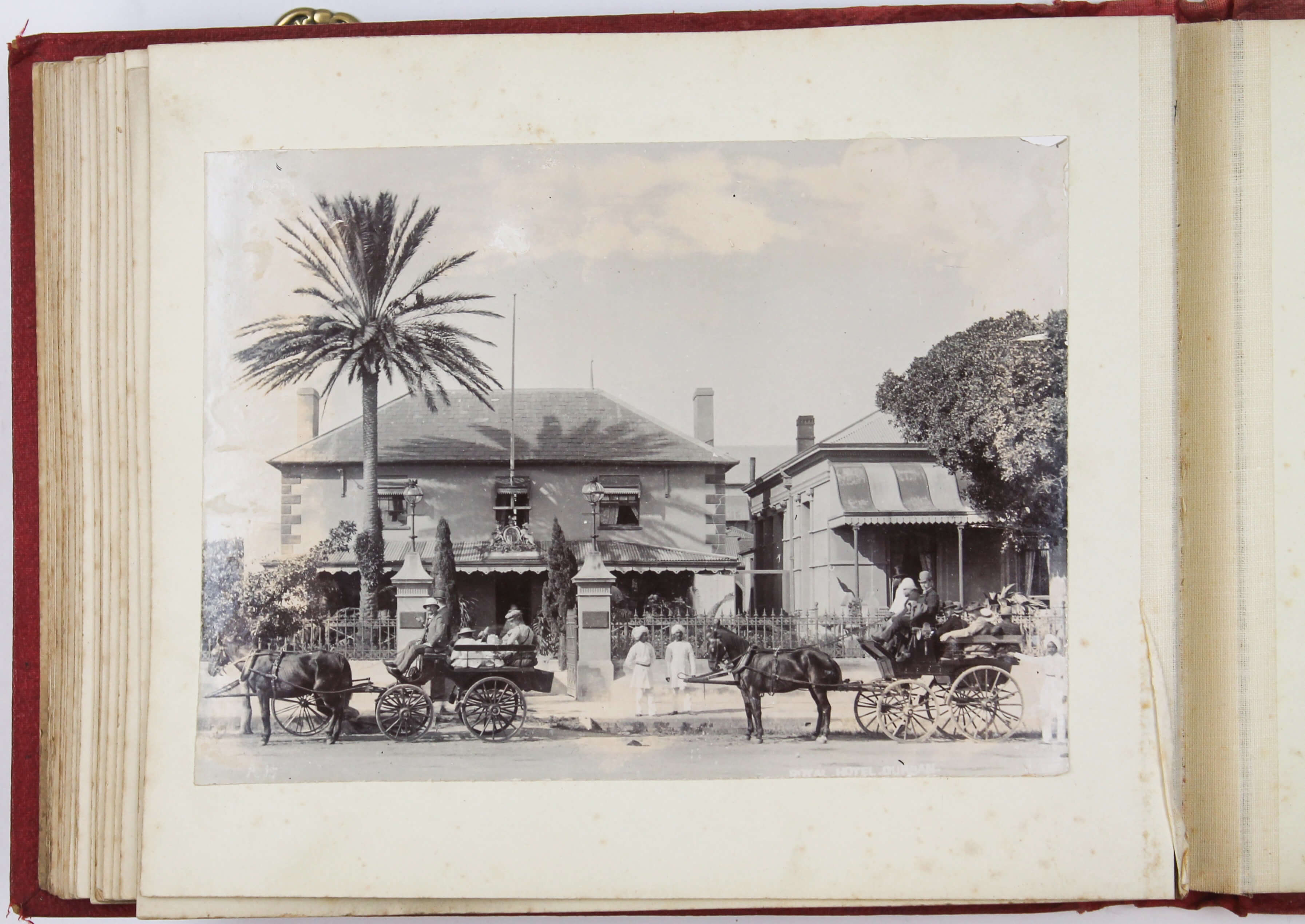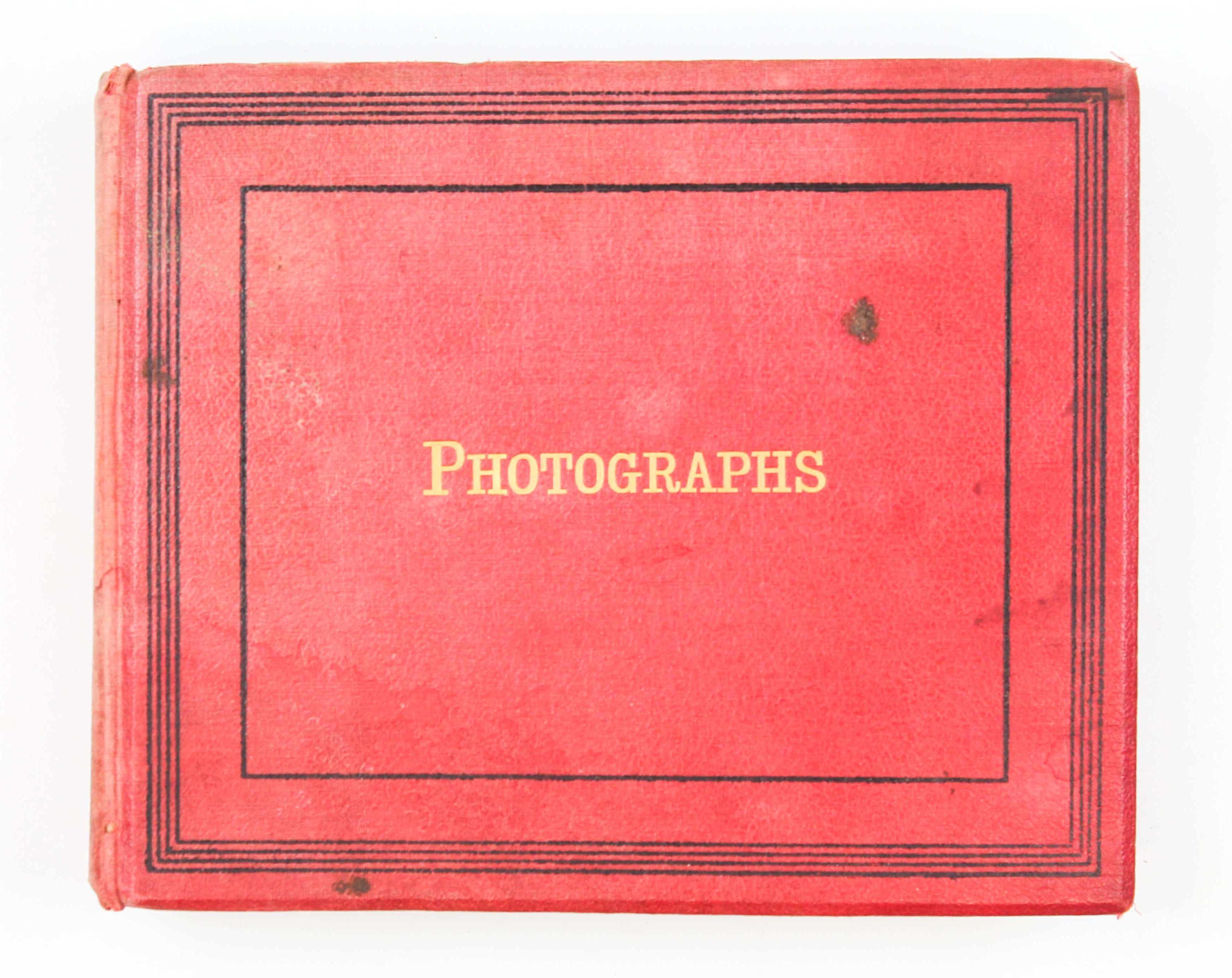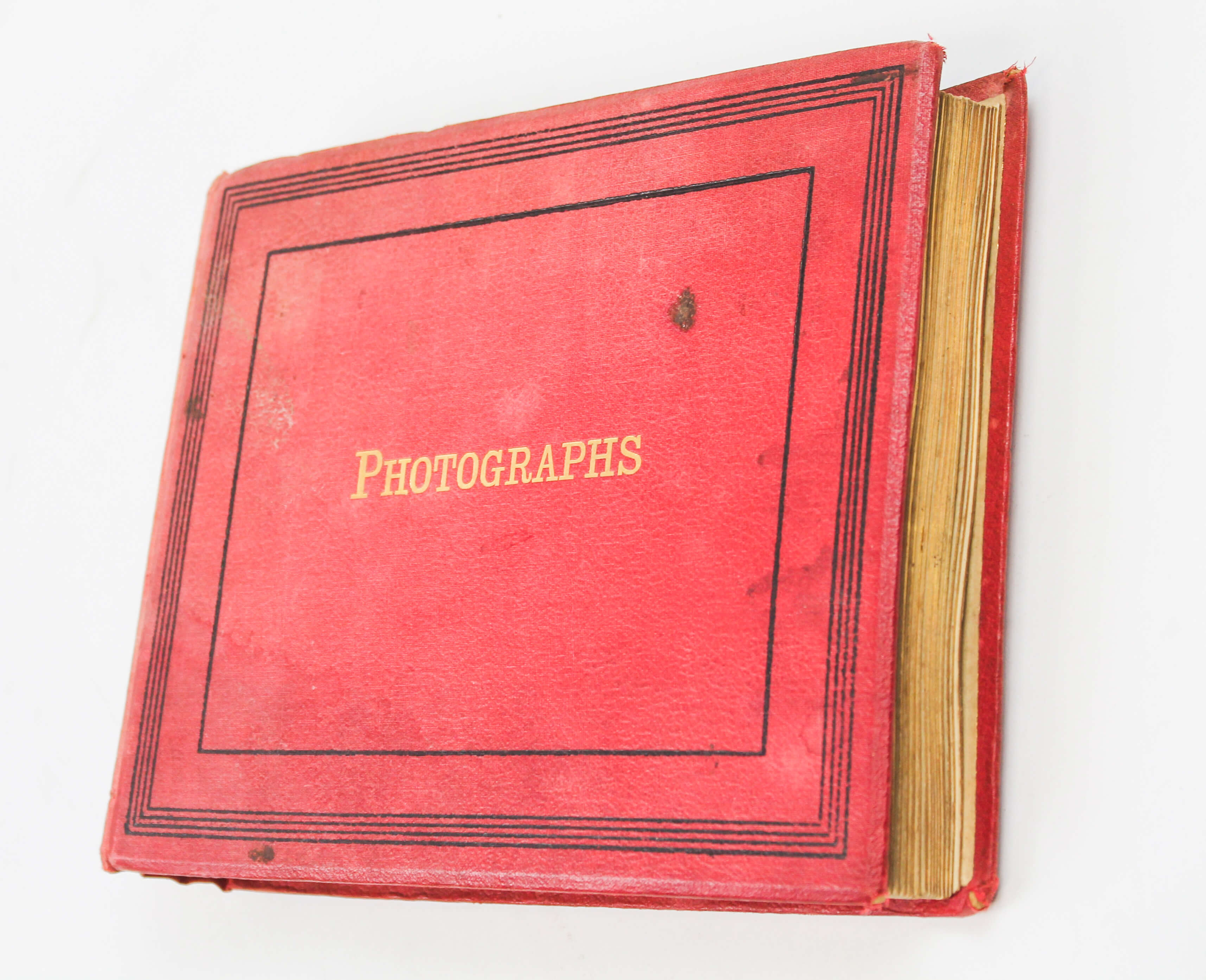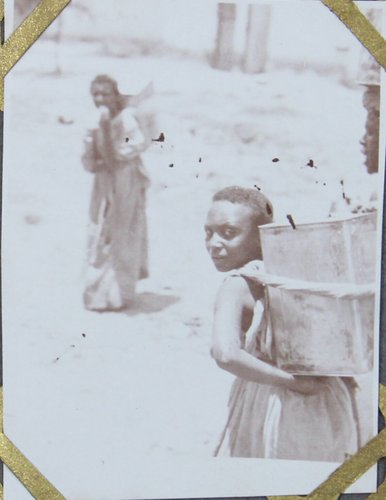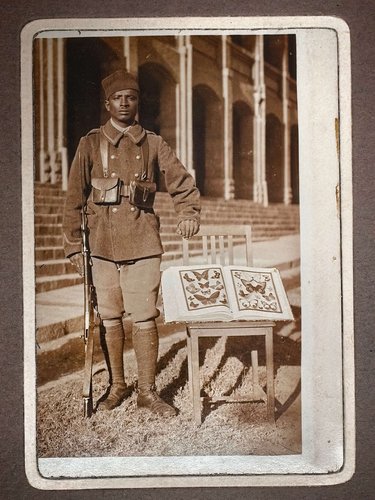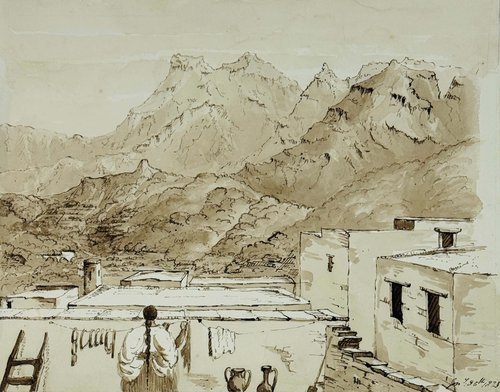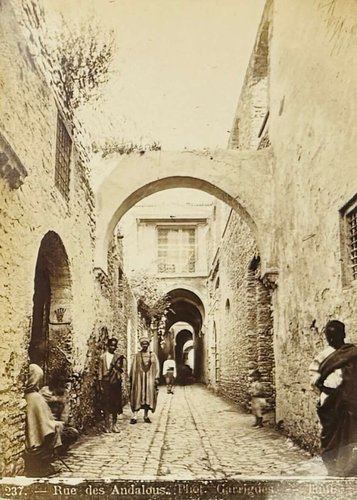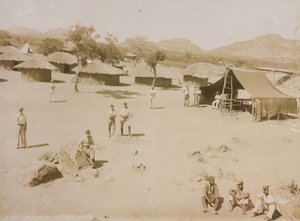
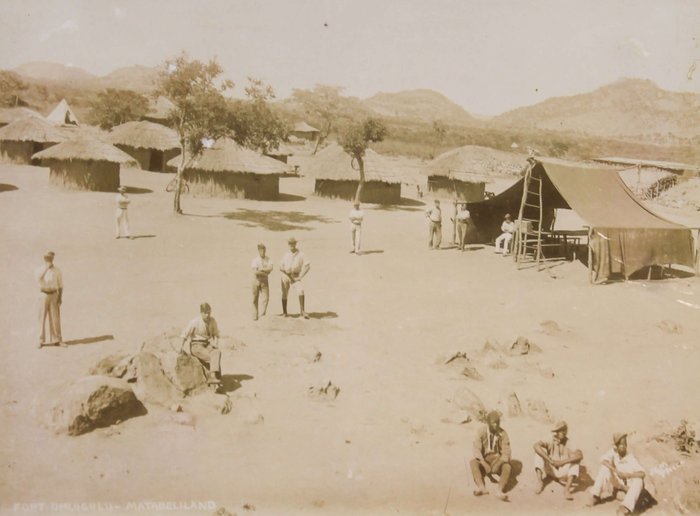
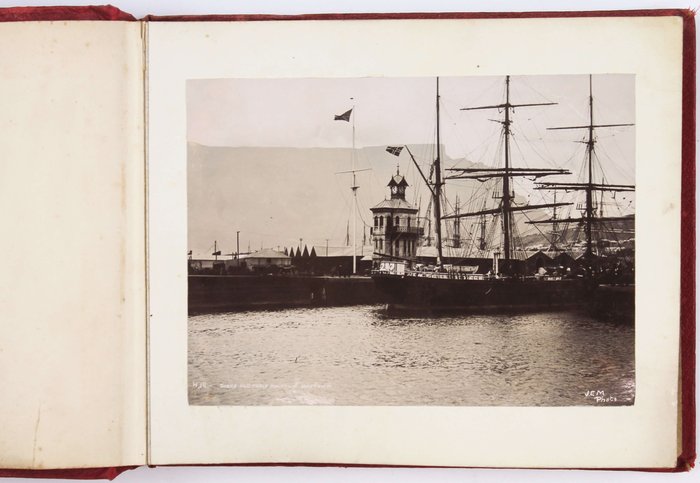




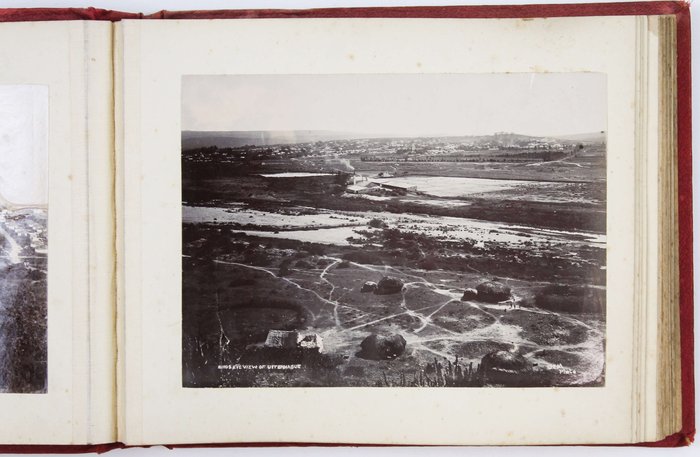

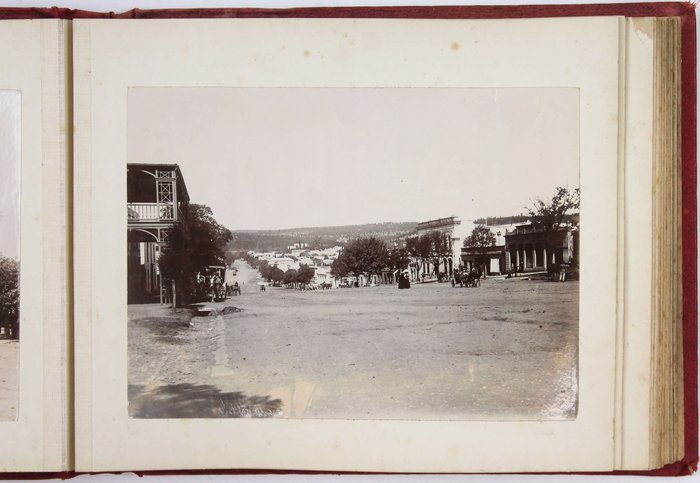



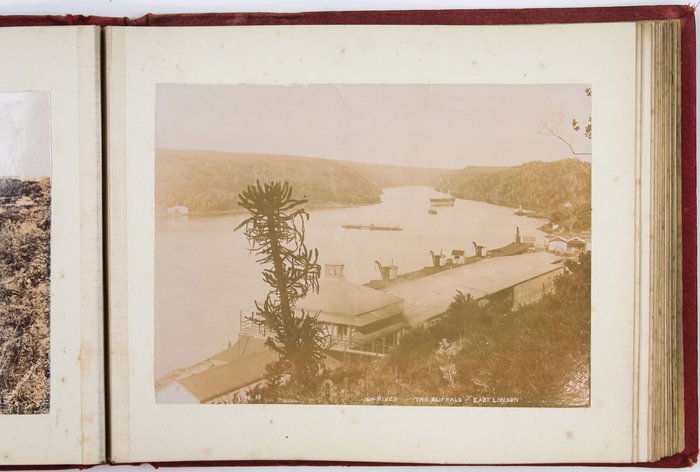
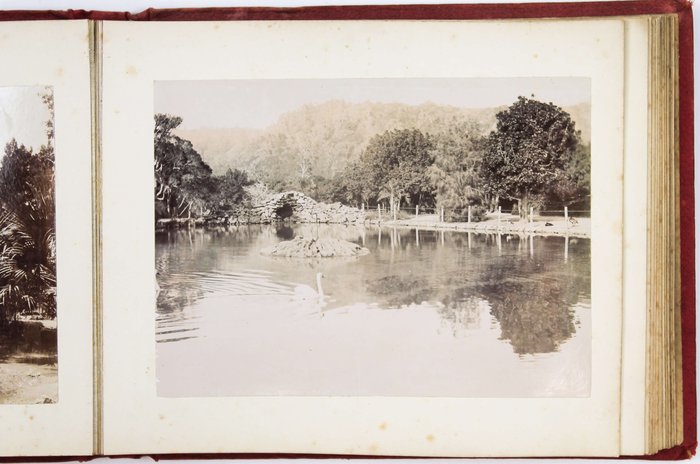
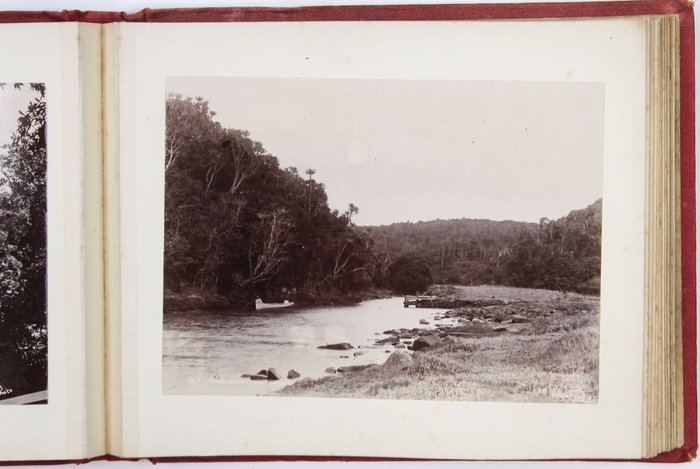
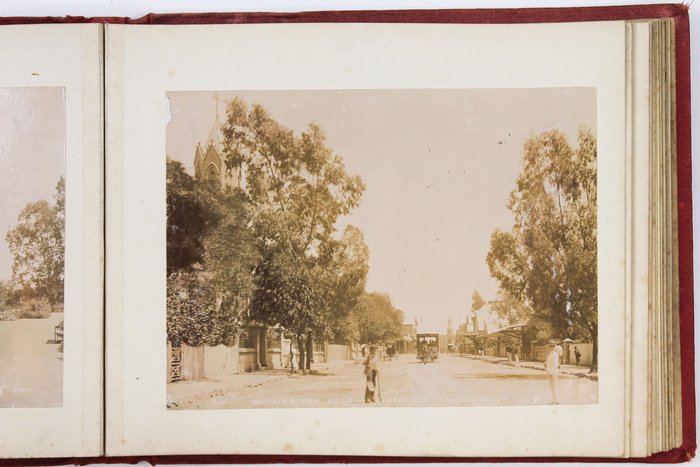





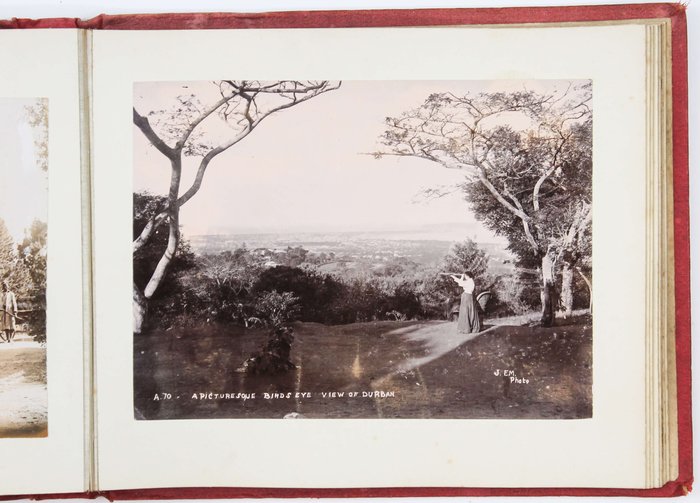
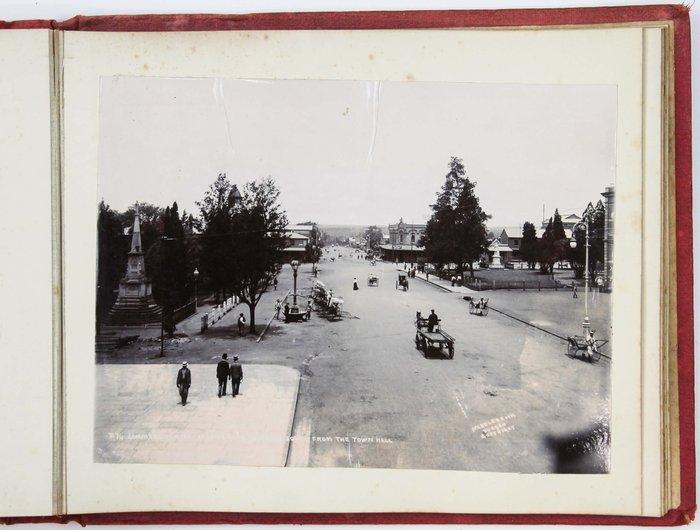
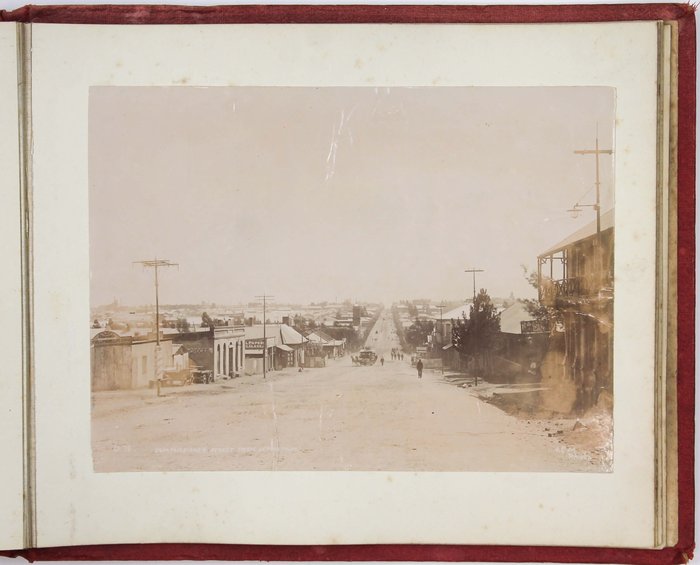
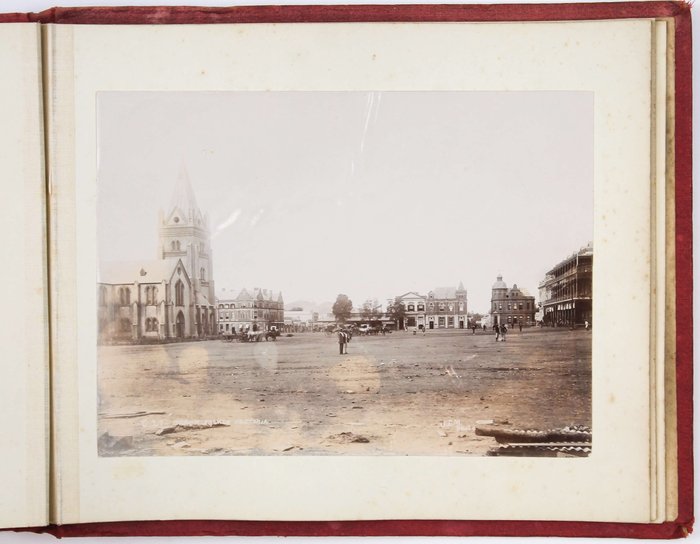
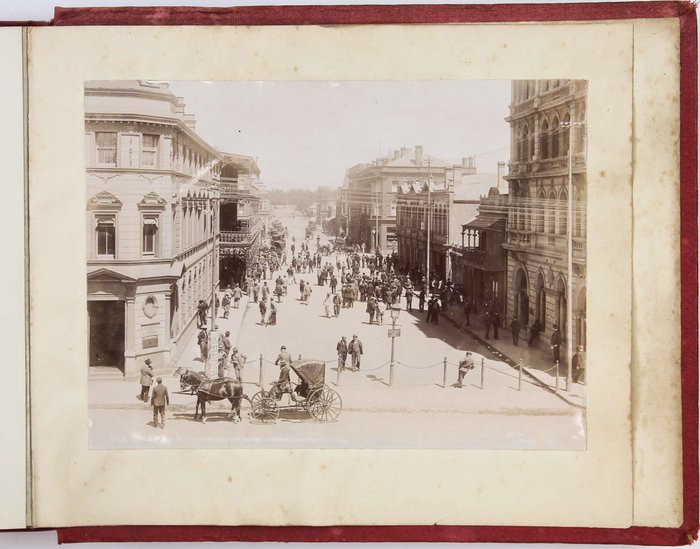
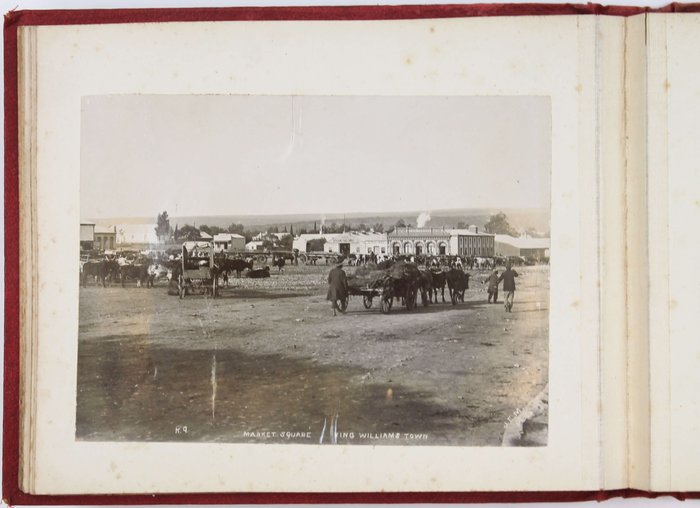
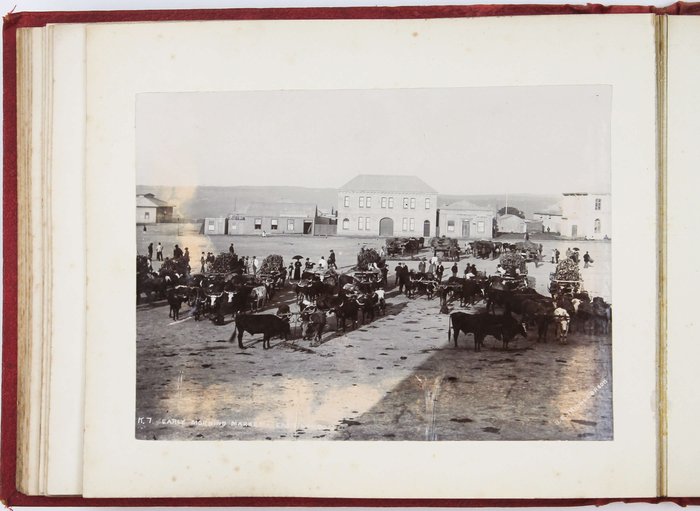
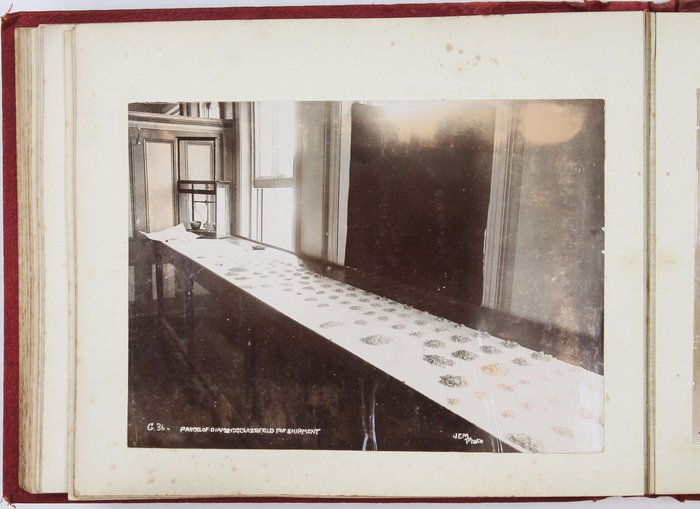
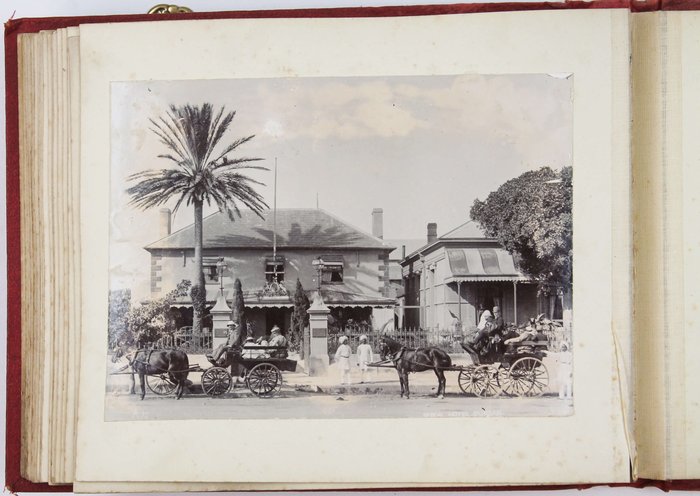


#PD31
Ca. 1899-1902
Oblong Octavo album (ca. 20,3x24,6 cm). 31 card stock leaves. With 61 mounted original albumen photographs ca. 13,9x18,9 cm (5 ½ x 7 ½ in). Most photos signed and captioned (in English) in negatives; one photo dated. Period red full cloth with gilt-lettered title “Photographs” on the front board; gilt-edges. Binding worn at the edges, light damp stains on the spine and the front cover, spine with a tiny hole, several photos with losses of few pieces, not affecting the composition of the images, photos slightly age-toned, but overall a very good album with strong, interesting photos.
Historically significant collection of large-size, well-executed albumen photographs of South Africa, taken by the professional photographer John E. Middlebrook (1863-1943) during the Second Anglo-Boer War (1899–1902). The war was fought between the British Empire and the two independent Boer republics, the South African Republic (Transvaal) and the Orange Free State, over control of the region’s diamond-producing territories, and ended with the annexation of both republics into the British Empire.
The compiler, John Middlebrook, was a leading South African commercial photographer who began his career in Kimberley, opening the Premier Studio in the 1870s, and later established a second studio in Durban. He photographed diamond fields, urban scenes, and ethnographic subjects, and is especially noted for documenting the Second Anglo-Boer War (1899–1902).
The album features sixty-one excellent photographs, including two striking views of the De Beers Diamond Mines in Kimberley, Cape Colony. The images show parcels of sorted diamonds prepared for shipment and a group of workers screening dirt under supervision. The photos were likely taken just weeks before the siege of Kimberley, when Boer forces surrounded the diamond-mining town from October 1899 to February 1900. Other photographs from pre-occupation Kimberley depict the Public Gardens—a major center of the diamond industry and one of the focal sites of the siege—and a view of Du Toit’s Pan Road (with visible English signs), leading toward one of the earliest diamond mines in the area.
About seven well-executed photographs show the British-controlled Natal Colony, with an important image documenting a group of armed Boers on horseback and on foot advancing into Natal. Another interesting photo shows the Boer bridge across the Tugela River, where key battles between British and Boer forces took place during the attempts to relieve Ladysmith. The rest of the photos from the Colony mostly illustrate vibrant views of Durban (Royal Hotel, Jubilee Fountain, Bayside, etc.) and Pietermaritzburg (Suspension bridge, commercial road).
Over eight vernacular urban scenes depict the Boer-controlled Transvaal, including about four photographs of its capital, Pretoria. The images show general views of the city, the lively Church Square, Wonderboom, and President Kruger’s House with a waving Transvaal flag. The album also includes a notable image of the Delagoa-Pretoria railway line, used to transport troops and supplies during the war. Other photographs from the Transvaal series depict Commissioner Street in Jeppestown (with clearly visible English signs “Bar,” “J.F. Clarke,” and “Papers, S. Glasses”), the overcrowded trading district “Between the Chains” in Johannesburg, tropical forest in Barberton, and the grave of Jameson’s troopers killed at Doorknop.
The album also includes a few photographs from the Orange River Colony, depicting Church Street and a cattle-filled Market Square in Bloemfontein.
The rest of the collection primarily features scenic and urban views of the Cape Colony, including Cape Town (dock with a ship and waving British flag, The Gardens Avenue, Groote Schuur Estate); Graaff-Reinet (Valley of Desolation); Port Elizabeth (Swartkops, Main Street, Bunton’s Grand Hotel); Uitenhage (general view, railway workshops); Grahamstown (High Street); Cradock (Church Street); King William’s Town (Market Square, Buffalo River); Queenstown (Oat Cart Road, Botanic Garden); and East London (general view, Queen’s Gardens, First Creek, Market).
There are also about three photos from Zimbabwe, depicting Fort Umlugulu in Matabeleland and Cecil Rhodes’ farm near Bulawayo, showing locals and European men near a cluster of circular huts with clay walls and thatched roofs.
Overall, historically significant collection of well-executed albumen photographs, documenting the life in South Africa during the Second Boer War


